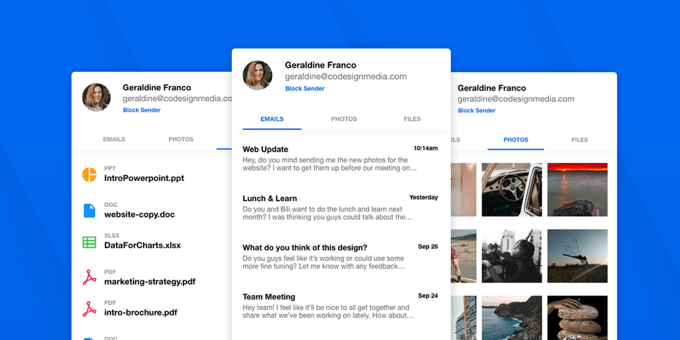Sophia Wood is a Venture Partner at Magma Partners. Sophia is also the co-founder of LatAm List, an English-language Latin American tech news source.
More posts by this contributor
As the world locks down borders and capital flows to brace for the impact of coronavirus, Brazilian startups continue to attract international attention. Three large acquisition deals dominated the Latin American tech headlines this month, all coming from the region’s largest country. As investments have waned, these deals offer hope for some increased liquidity in Latin America’s startup ecosystem.
At the beginning of the month, Brazilian real estate leader Grupo ZAP was acquired by OLX Brasil for $640 million, solidifying the classifieds platform’s position in the local property market. The deal will enable OLX to offer its customers more than 12 million listings from 40,000 agencies and individuals.
Grupo Zap merged with the property rental platform VivaReal in December 2017, becoming the de facto largest real estate portal in the country. While the brands have operated separately, they jointly receive more than 40 million visits per month to help Brazilians find properties for rental and purchase. The acquisition is still under review from Brazil’s antitrust agency, CADE, and will be finalized later this year.
Meanwhile, Peixe Urbano reported its intention to acquired Grow Mobility, the alternative mobility company created from the merger between Mexico’s Grin and Brazil’s Yellow. Peixe will own the majority share in the e-scooter and bike-share startup, which has recently struggled to turn a profit. After leaving 14 cities in February, Grin Mobility is only active in Brazil’s three largest cities today, as well as in a few countries around Latin America, despite a promising partnership with Rappi in 2019. Grow Mobility raised $150 million in January 2019 when Grin and Yellow merged and seemed to be one of the fastest-growing startups at the time; however, this deal is rumored to be a total write-off for the startup’s investors.
Finally, a Swedish cloud communications platform called Sinch AB announced it would acquire Movile’s strategic communications company, Wavy, for $68.3 million (BRL$554 million) and more than 1.5 million shares in the publicly traded company. Movile is one of Brazil’s largest tech businesses, a telecommunications company striving to become the region’s Tencent. Wavy is Brazil’s second-largest messaging provider and also operates in Mexico, Colombia, Peru, Chile, Argentina and Paraguay, relaying more than 13 billion messages per year. Sinch will use the acquisition to grow into the Latin American market, where Wavy currently employs over 260 people across nine offices in the region. At the time of purchase, Wavy was growing at 200% year-on-year, hinting at strong growth for the new business over the coming years.
Movile also announced the arrival of a new CEO, Patrick Hruby, in the last week of March. His predecessor, Fabricio Bloisi, co-founder and CEO since 1998, will take a seat as board president and will continue to act as CEO of iFood. Hruby previously spent five months as an Executive in Residence at Movile, where he worked closely on operations with all Movile companies: iFood, MovilePay, PlayKids, Sympla, Wavy and Zoop. Movile is one of Brazil’s least-known unicorns, quietly building a mobile empire for the region with a goal of impacting over one billion people.
Credijusto raises $100M to support SMEs in need
The Mexican credit provider, Credijusto, announced in mid-March that it had received $100 million in debt from Credit Suisse to help the startup extend more loans to SMEs affected by the economic impact of the coronavirus. Small businesses in Mexico already struggle to access financing from banks, and the current economic projections will likely cause financial institutions to hold off on risky investments for the foreseeable future.
Meanwhile, this credit crunch has caused a surge of interest in Credijusto’s products: online small-business loans. The startup uses an algorithm to rapidly calculate risk and interest rates, providing much-needed liquidity for SMEs struggling in the face of financial turmoil. Credijusto also recently raised a $100 million debt vehicle from Goldman Sachs, alongside a $42 million Series B equity round from Goldman and Point72 Ventures in September 2019.
Cornershop, iFood: Keeping up with coronavirus delivery demands
While in the U.S., Instacart and Amazon are scrambling to keep up with the boom in delivery orders, Latin American delivery giants Cornershop and iFood face similar challenges. Mexican-Chilean delivery app Cornershop, which was acquired by Uber last year for $450 million, revealed they had just nine months of operating capital left as they face unprecedented order volume.
Despite the large acquisition deal, Cornershop’s case remains under review by the Mexican antitrust organization, COFECE, which blocked their previous $225 million acquisition offer from Walmart. Cornershop’s co-founder and CEO Oskar Hjertonsson took to Twitter to share the challenges his company is facing as demand for grocery delivery surges due to coronavirus concerns. He notes that grocery delivery has become an essential service in many areas with severe quarantines, yet with the acquisition still in question, Cornershop does not have the resources to serve the current demand.
Two Mexican regulators are currently fighting over the jurisdiction to review this case, which has been going on for more than six months without a resolution. Cornershop has been at the mercy of Mexican officials since June 2018, when they first announced their Walmart acquisition. On Twitter, Hjertonsson urges Mexican officials to move forward on the decision as soon as possible to capitalize on an opportunity to help millions of Latin Americans who are currently in lockdown, as well as bringing in the resources needed to protect their delivery staff.
At the same time, Brazil’s largest food delivery company, iFood, announced the launch of a new fund to help small restaurants survive the economic tumult brought on by the coronavirus. The food industry has been one of the hardest-hit by the pandemic, as many restaurants live on small margins. To combat this trend, iFood launched a $9.8 million fund that will support small restaurants within the iFood network.
The company also announced that it would speed up receipt processing during April and May, helping small businesses receive their payments within seven days without extra cost. This measure will inject an additional $117 million into the Brazilian restaurant market. Finally, iFood seeks to support its restaurant partners by returning all fees they receive for delivery during the coronavirus epidemic. Realizing that restaurants must rely on delivery orders to survive this period, iFood has extended these measures to over 120,000 restaurant partners in 1,000 cities across Brazil.
News and Notes: Vai.Car, ClassPass, Superlogica and NotCo
Despite public health and economic concerns about COVID-19, the Latin American startup ecosystem remained active this month, with startups raising large rounds from local and international firms alike. Brazil’s car rental startup Vai.car raised $85 million from the Brazilian investment platform XP Investimentos, which IPO’d at the end of 2019. The startup targets a young market by enabling medium-term car rentals that are delivered to the user’s door and unlocked with face recognition technology. Vai.car also partners with Uber and 99 to help drivers access vehicles from their fleet of more than 25,000 cars.
U.S. gym-sharing platform Classpass expanded aggressively into Latin America this month through the acquisition of Chile’s Muvpass and Argentina’s Clickypass. These platforms work similarly to Classpass, allowing users to access a network of gyms and fitness classes across the country. Classpass launched in Brazil in December 2019 and became the first unicorn of the decade, with a $285 million Series E in early 2020.
The Brazilian payments management platform Superlogica raised a $63.5 million round from U.S. private equity firm Warburg Pincus in mid-March. Superlogica helps companies manage recurring payments using a subscription model powered by artificial intelligence. The startup currently serves customers in more than 45,000 rental properties around the country.
Chilean plant-based food tech startup, The Not Company, announced a partnership with Burger King to create a vegan Whopper across the United States. The RebelWhopper is made of plant-based meat and features NotCo’s signature NotMayo, a mayonnaise made without animal products, which rapidly became a household name in Chile. The Not Company raised $30 million from Bezos Ventures and other investors in 2019 and has continued to expand rapidly into Argentina and Brazil over the past year.
The past six weeks have been characterized by global uncertainty about the future of the economy and international relations as COVID-19 has made its way into every country in the world. However, deal flow in Latin America was still strong in March, bringing large deals and several acquisitions, especially in Brazil, even as the country refuses to lock down to prevent the spread of the pandemic. Notably, despite travel restrictions, many of the deals this month were led by foreign VCs, hinting at a potential for quicker feedback loops in the region as investors disburse capital without traveling first.
It is hard to see today what the new normal will be globally, and specifically in venture and tech in Latin America. Almost every country has closed its borders, some more forcefully than others, and many are waiting out the pandemic in some level of quarantine. Just Mexico and Brazil, the region’s largest economies, remain adamant about keeping their cities running normally, even encouraging their citizens to visit bars, restaurants and museums as their neighbors shutter businesses. Time will tell how this decision will affect startups and investments, as well as their citizens and political stability, across the region.







